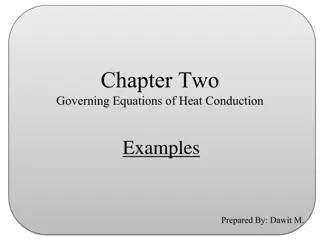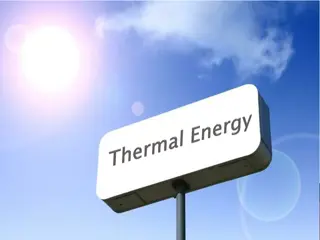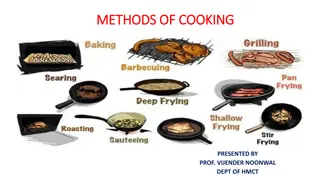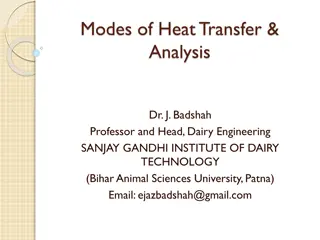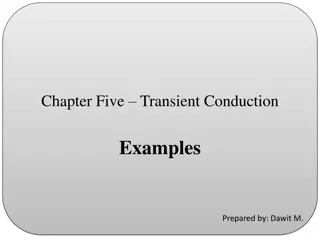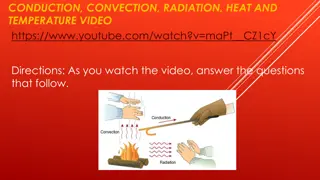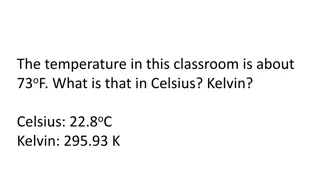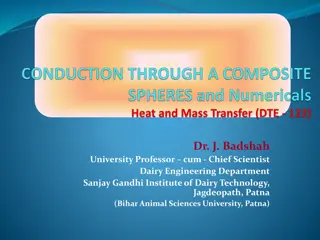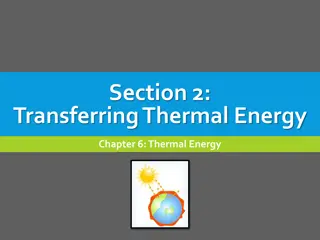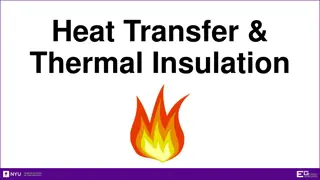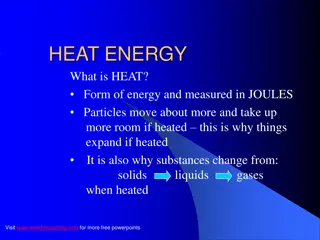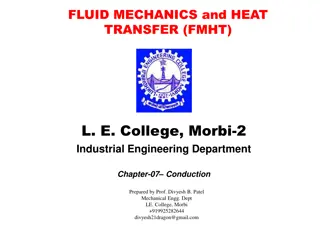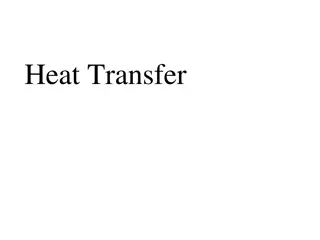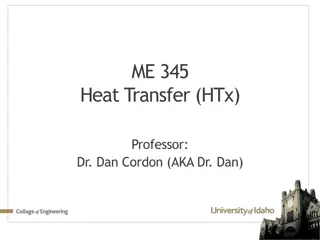Understanding Heat Conduction and Transfer in Thermal Systems
Explore the fundamental concepts of heat conduction and transfer, including Fourier's law, steady-state conduction, thermal resistance, multi-layered systems, cylindrical objects, and overall heat transfer coefficients. Discover how to analyze boundary conditions, calculate critical insulation thickness, and apply the resistance concept to solve heat transfer problems effectively.
Download Presentation

Please find below an Image/Link to download the presentation.
The content on the website is provided AS IS for your information and personal use only. It may not be sold, licensed, or shared on other websites without obtaining consent from the author. Download presentation by click this link. If you encounter any issues during the download, it is possible that the publisher has removed the file from their server.
E N D
Presentation Transcript
Heat conduction Fourier's law of heat conduction
Steady state heat conduction Steady state means that temperature in an object may vary by location but it does not change with time.
Fourier's law describes the rate of heat conduction in a solid Boundary Conditions x = x1, T = T1 x = x2, T = T2 Separating the variables, Integrating from x1to x (some interior location within the slab)
Where L= thickness of the slab Thermal Resistance concept: In the flow of electricity, the electrical resistance is determined from the ratio of electric potential divided by the electric current. Similarly, we may consider heat resistance as a ratio of the driving potential (temperature difference) divided by the rate of heat transfer. Thus,
HEAT CONDUCTION IN MULTILAYERED SYSTEMS COMPOSITE RECTANGULAR WALL (IN SERIES) In a single layer, the rate of heat transfer is:
Conduction in cylindrical objects Fourier's Law in cylindrical coordinates Boundary Conditions T =Ti at r = ri T=To at r = r0 ??= ?(2???)?? ??
Separating variables: Integrating :
OVERALL HEAT TRANSFER COEFFICIENT Heat transfer to the internal wall Heat transfer through the wall Where Alm
Outside the wall By summing the three equation 1,2, and 3 the result is :
COMPOSITE CYLINDRICAL TUBE for a single-layer pipe: and resistance due to conduction Thermal resistance diagram:
Heat Conduction in a Spherical Shell Fourier's Law in radial coordinates Substituting the area of a sphere Integrating, between r = r1and r2, and T1and T2
Conduction with internal heat generation In some cases it energy may be produced in an identical shape inside the system like electrical heaters or in respiration in fresh food products such as fruits and vegetables.
Rate of heat in + rate of heat generation = rate of heat out + rate of heat accumulation By taking the limit And for a pure conductive material
Note that if the heat generation zero then : By integration Then we get
At x=-L, T=Tw And at x=L, T=Tw And by solving 1 and 2 At x=0, To=center temperature:
Total heat at both sides =total heat generated at steady state case.
Home work #2 Temperature change with change of distance from the center of generation Draw the relationship between temperature and distance x from the center of the wall knowing that: Ta q' L H k 25 5 1 10 2 C w/m2. k w/m. k w/m3 m Home work should be submitted after 6 days from the lecture.


